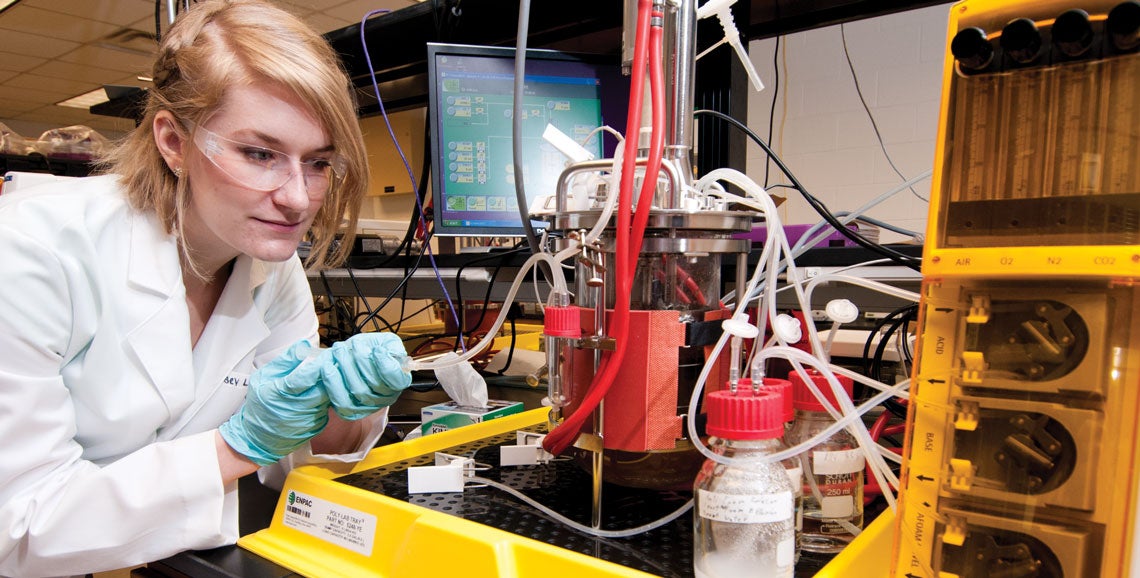East Carolina University®
by the Numbers
Our Student Body
Total Enrollment
26,940
ECU Students Represent
- All 100 North Carolina counties
- 49 states plus the District of Columbia
- 73 countries
In-State Residency 23,899
STEM/Health Care Enrollment
42% of Total Student Body

- 8,598 Undergraduate
- 2,821 Graduate
31%
Percentage of enrolled students (total student body) who self-identify as being from one of the following groups (regardless of U.S. citizenship status): American Indian or Alaska Native, Black or African American, Hispanic, Native Hawaiian or Pacific Islander, or two or more races
Class Level
- First-Year 5,005
- Sophomore 4,086
- Junior 4,489
- Senior 6,091
- Graduate* 4,261
- Professional†931
- Post-Baccalaureate Certificate 205
- Unclassified 1,647
- Second Bachelors 225
* Includes students in master’s, post-master’s certificate and doctoral programs
† Includes students in audiology, dental medicine, medicine, nursing practice and physical therapy programs
Academics
Program Inventory
- 84 BACHELOR’S DEGREES
- 19 BACCALAUREATE CERTIFICATES
- 73 POST-BACCALAUREATE CERTIFICATES
- 68 MASTER’S DEGREES
- 12 POST-MASTER’S CERTIFICATES
- 2 SPECIALIST DEGREES
- 13 DOCTORAL DEGREES
- 2 POST-DOCTORAL CERTIFICATES
- 6 PROFESSIONAL DEGREES
- 6 PROFESSIONAL DEGREES
- 279 TOTAL DEGREES & CERTIFICATES
- 164 PROGRAMS APPROVED FOR ONLINE DELIVERY
Highest-Enrollment Degree Programs
Undergraduate
| Nursing (BSN) | |
| Management (BSBA) | |
| Psychology (BA) | |
| Biology (BS) | |
| Marketing (BSBA) | |
| Communication (BS) | |
| Construction Management (BS) | |
| Criminal Justice (BS) | |
| Exercise Physiology (BS) | |
| Industrial Technology (BS) |
Graduate‡
| Business Administration (MBA) | |
| Medicine (MD) | |
| Nursing (MSN) | |
| Nursing (DNP) | |
| Dental Medicine (DMD) | |
| Library Science (MLS) | |
| Social Work (MSW) | |
| Counselor Education (MS) | |
| Accounting (MSA) | |
| School Administration (MSA) |
‡ Includes students in master’s, doctoral and professional degree programs
Rankings and Recognitions
ECU achieves high rankings and recognitions from a variety of reputable publications, websites and organizations, including the following:
- Newsweek
- U.S. News & World Report
- Washington Monthly
- The Princeton Review
- Military Times
Such acknowledgments align with our mission to be a national model for student success, public service and regional transformation.
For details, please visit the university’s Rankings and Recognitions dashboards.
Student Life
Faculty and Staff Numbers
- EHRA FACULTY 1,990
- EHRA NON-FACULTY & POSTDOCTORAL SCHOLARS 950
- EHRA SENIOR ACADEMIC & ADMINISTRATIVE OFFICERS143
- CSS CLINICAL SUPPORT SERVICES 803
- SHRA STAFF 1,842
- TOTAL FACULTY & STAFF 5,728
- 0-9
2,727
- 10-19
1,510
- 20-29
859
- 30+
243
- Not Applicable
389
Years of Service
to State of North Carolina
Return on Investment
NATION’S HIGHEST-PAYING MAJORS OFFERED AT ECU
- Computer Science
- Engineering
- Information Technology
- Economics
- Nursing
- Construction Management
- Mathematics
- Business Analytics
- Finance
- Accounting
- Physics
- Business
- AND MORE
Almost 90% of ECU alumni are EMPLOYED or advancing their education within six months of graduating.

ECU is #1
- In the University of North Carolina System for adult-learner and military-affiliated enrollment
- In providing educators and health care professionals for North Carolina

ABOVE-AVERAGE SALARIES
Early-career salaries for ECU graduates are above average for graduates of the University of North Carolina
About the Data
The information in the Our Student Body, Academic Programs, and Our Faculty and Staff sections of this publication is provided by Institutional Planning, Assessment and Research (IPAR) at ECU, which collects, analyzes, warehouses and disseminates data about the university.
For detailed data resources available to the public, visit IPAR online. IPAR’s dashboards and reports offer current and historical details on a wide range of topics, including the following:
- Enrollment
- Demographics
- Degrees offered and awarded
- Student, faculty and staff statistics
- University rankings and recognitions